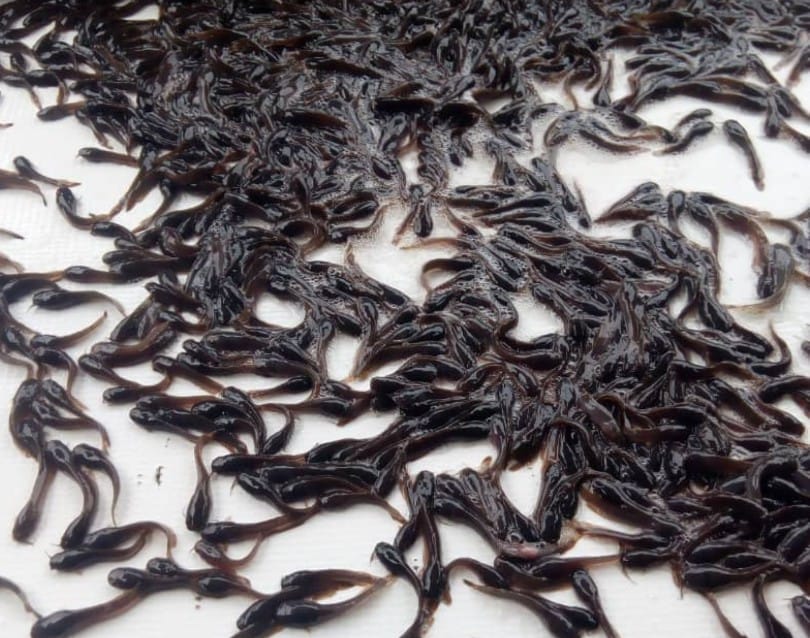08055999218
Catfish Seeds, Species and Sourcing
Catfish seeds, also known as fingerlings or juveniles, are the young catfish that are used for stocking ponds or tanks in aquaculture operations. In Nigeria, there are several catfish species commonly used in commercial catfish farming. The most popular species include:

Clarias gariepinus (African catfish):
Clarias gariepinus is the most widely cultivated catfish species in Nigeria. It is known for its adaptability, fast growth rate, and high market demand. African catfish farming has been well-established in the country for many years.
Heterobranchus bidorsalis (African butter catfish):
Heterobranchus bidorsalis, commonly known as African butter catfish, is another popular catfish species in Nigeria. It is known for its good growth performance and flesh quality.
When sourcing catfish seeds in Nigeria, you have a few options:
1. Government Fisheries Agencies:
Government fisheries agencies such as the Federal Department of Fisheries or State Ministries of Agriculture often have fish hatcheries or seed production centers. They provide catfish fingerlings for sale to farmers at subsidized rates.
2. Private Hatcheries:
Private hatcheries specialize in catfish fingerling production and supply. These hatcheries can be found in various locations across Nigeria. They often offer a range of catfish species and sizes to meet the needs of farmers.
3. Fish Farmers’ Associations:
Local fish farmers’ associations or cooperatives may have their own hatcheries or sourcing networks. They can provide information and assistance in sourcing quality catfish seeds from reliable suppliers.
4. Research Institutes and Universities:
Some research institutes and universities in Nigeria conduct research and development activities in aquaculture, including catfish seed production. They may have seed production facilities and occasionally offer catfish seeds for sale.
Factors to Consider when sourcing catfish seeds include the following:
1. Quality: Ensure that the fingerlings are healthy, disease-free, and of good genetic stock.
2. Size: Choose fingerlings or juveniles of appropriate size for your production system and growth objectives.
3. Reputation: Source from reputable hatcheries or suppliers with a track record of producing quality catfish seeds.
4. Transportation: Consider the logistics of transporting the fingerlings to your farm. Ensure proper packaging and transportation methods to minimize stress on the fingerlings.
In Conclusion, t is advisable to visit the hatchery or supplier, inspect their facilities, and inquire about their production practices before making a purchase. Seek recommendations from experienced farmers or aquaculture experts to identify reliable sources of catfish seeds in your region.
Do you want to learn more about fish farming? Read more on our Fishery Academy page
Follow us on our social media handles: Facebook, Twitter, Instagram and TikTok

Thanks for the enlightment
Thanks for the enlightment.